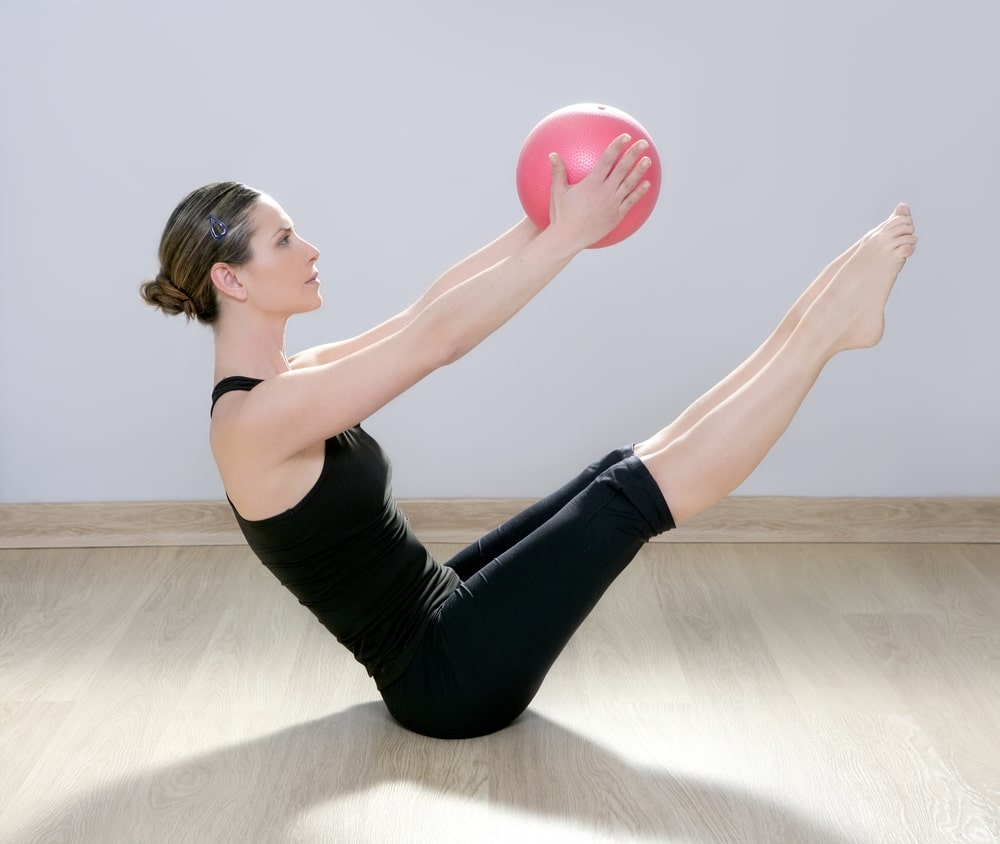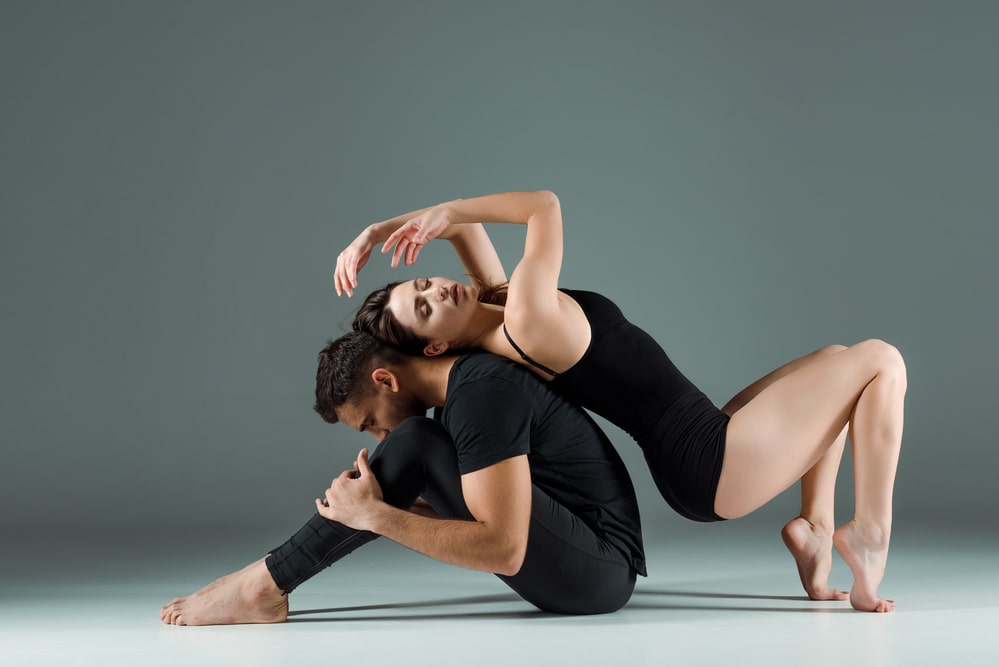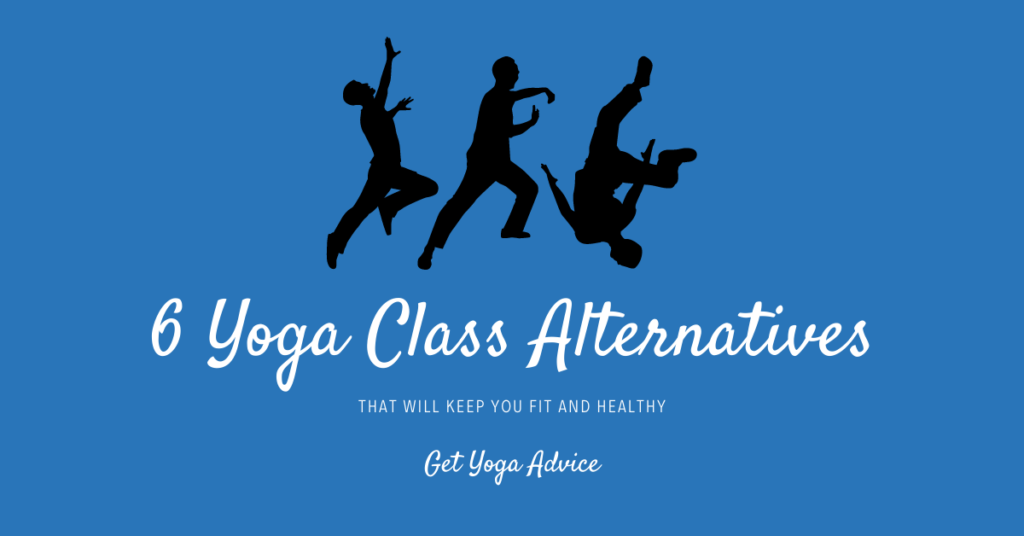Have you ever tried yoga? Most people have – it has been around for millennia and has only become more popular in recent years; now it’s one of the most common forms of exercise.
It is an exercise in connecting the mind, body and spirit to get fit, remain healthy and ensure mental wellness.
We all look for ways to reduce stress, which explains why retreating to the yoga studio is so enticing. But, what if you want to explore a different practice?
These yoga class alternatives also offer the chance to become fit and healthy.
Contents
Yoga Class Alternatives
1. Pilates

Pilates is similar to yoga. It includes stretching, poses, and deep, focused breathing to give you an all-round rewarding (and tough) class. The health benefits are similar too.
Joseph Pilates created this exercise in the 1920s and believed in a connection between the mind and body. He thought by treating one you treated the other.
Pilates lacks the spiritualism yoga has; instead, it is more focused on healing the body and mind simultaneously through effective breathing.
Pilates is focused on a group of ‘core’ muscles around the abdomen, hips, thighs, buttocks, lower and upper back. During exercises, students are taught to keep these muscles tight to help maintain difficult positions while remaining grounded (so you don’t fall over as much!).
By keeping these muscles constantly tight, you can achieve strong and toned muscles in a surprisingly short period of time.
Unlike yoga, no specific time is carved out in class for meditation. The rhythmic breathing calms the mind and gives you a great way to escape a long, hard day. Pilates will improve your posture, balance, flexibility and will keep you in good shape.
You might be interested in our yoga and work explainer.
2. Tai Chi
Tai Chi is growing more popular as a mind-body practice.
Originating in China, it combines meditation techniques with movement. It also involves some basic martial arts.
The long, slow, continuous movements work on relieving tension from the body; it works every single muscle to improve strength, and it tones the whole body.
Meditation takes place as you are moving, promoting relaxation and ensuring long-term mental well-being.
Tai Chi is suitable for any age, any fitness level and can be practiced regardless of health; it is taken up most commonly by people aged 50+ in China to help reduce the negative ageing effects.
Tai Chi can build lower-body and upper-body strength and improve overall well-being. It will improve your posture, flexibility, balance (especially for the uncoordinated) and overall fitness while relieving stress and leaving you walking out of the class wishing for more.
3. Contemporary Dance

Dance is undeniably beautiful; it’s graceful and elegant and takes so much control, resilience and strength. It is a phenomenal form of exercise, and it can be a great way to relax as well. It makes for a unique alternative to yoga because although it’s considerably different, the rewards are the same.
Contemporary dance is freeing, and it’s a great way to express yourself, which makes it so much fun. This is where dance and yoga are different.
Dance is more competitive, and dancers generally want to perform in front of people. This can be great if you’re goal-oriented and fancy getting up on stage, but if not, you can just take the classes as exercise.
Contemporary dance will build muscle, tone your body as well as improve your posture, flexibility and balance. It requires focus and is a challenging class; it’s also a great form of stress-relief.
4. Ballet
Perhaps you took ballet classes as a child?
It’s still a fabulous way to get fit and toned just doing evening or morning classes without striving for a professional career. Ballet is beautiful and elegant, and it’ll help your posture, flexibility and strength.
Interestingly, many ballet dancers take yoga to enhance their skills as both focus on flexibility and strength. So, although they are very different forms of exercise, you can use them interchangeably to improve your flexibility and technique.
It may not look like it, but ballet is intense and can be just as tiring and relentless as a cardio fitness class. Ballet classes do not have a meditative element as such, but dancing is a form of stress-relief, which we all know from dancing around our kitchens! Overall, it works the whole body and is a great way to let off steam to lead a healthy, happy life.
5. Parkour

When we think of Parkour, we think of the cool people in the movies who jump, run and roll like ninjas. However, it is a legitimate form of exercise; the classes have a similar structure to 1-1 personal training classes, and they use obstacle courses.
Parkour is the art of efficiently getting from place A to B through running, jumping, rolling, vaulting or using any means without the use of equipment.
Like a challenging yoga asana, this form of exercise is impressive to watch. You must use almost all of your muscles, so it’s a great way of strengthening and toning the body. It will also help your coordination, boost confidence and relieve stress.
6. Gymnastics
Another alternative to a yoga class, gymnastics represents a full-body workout. It also includes a range of exercises to master, including handstands, pull-ups and various floor exercises, and that’s before you step onto the balance beam.
This type of exercise program will build strength, endurance and flexibility.
Yoga Class Alternatives: The Final Word
Hopefully, you’ve managed to find something here that interests you or maybe you’ve decided to combine yoga with one of the above exercises. Either way, good luck with your journey to remain fit, happy and healthy.



